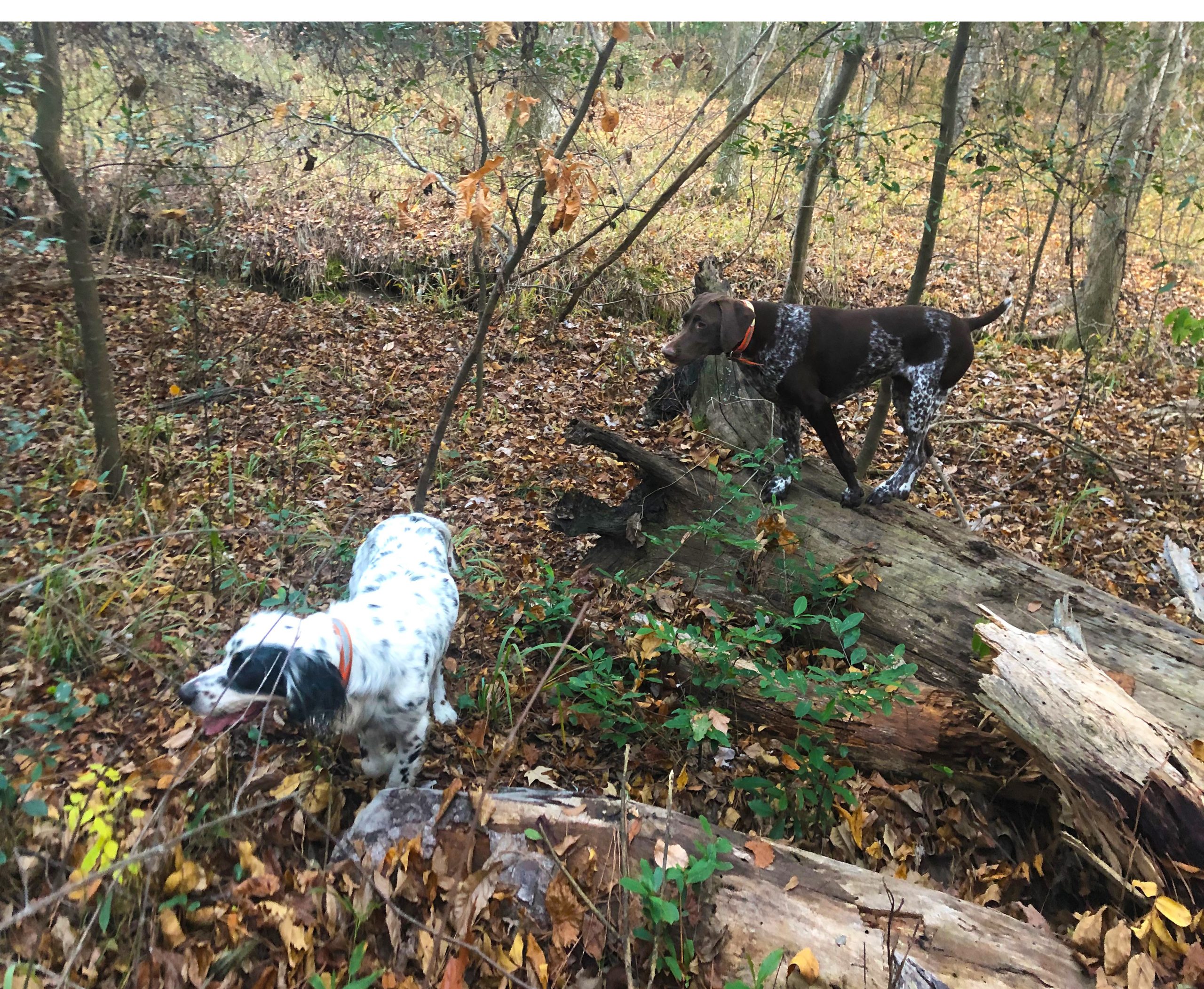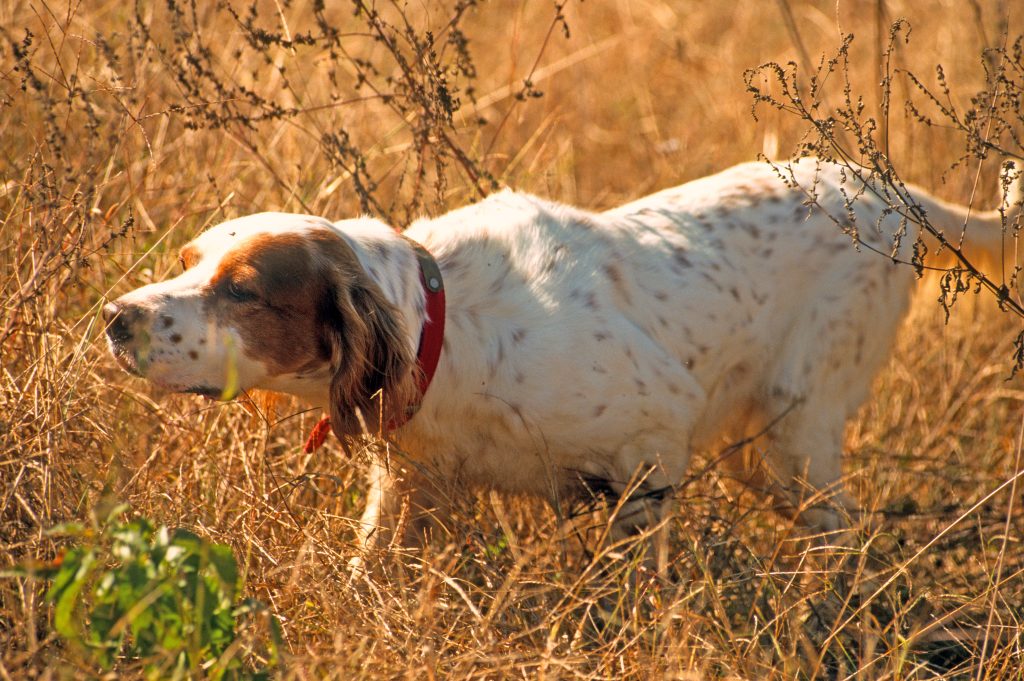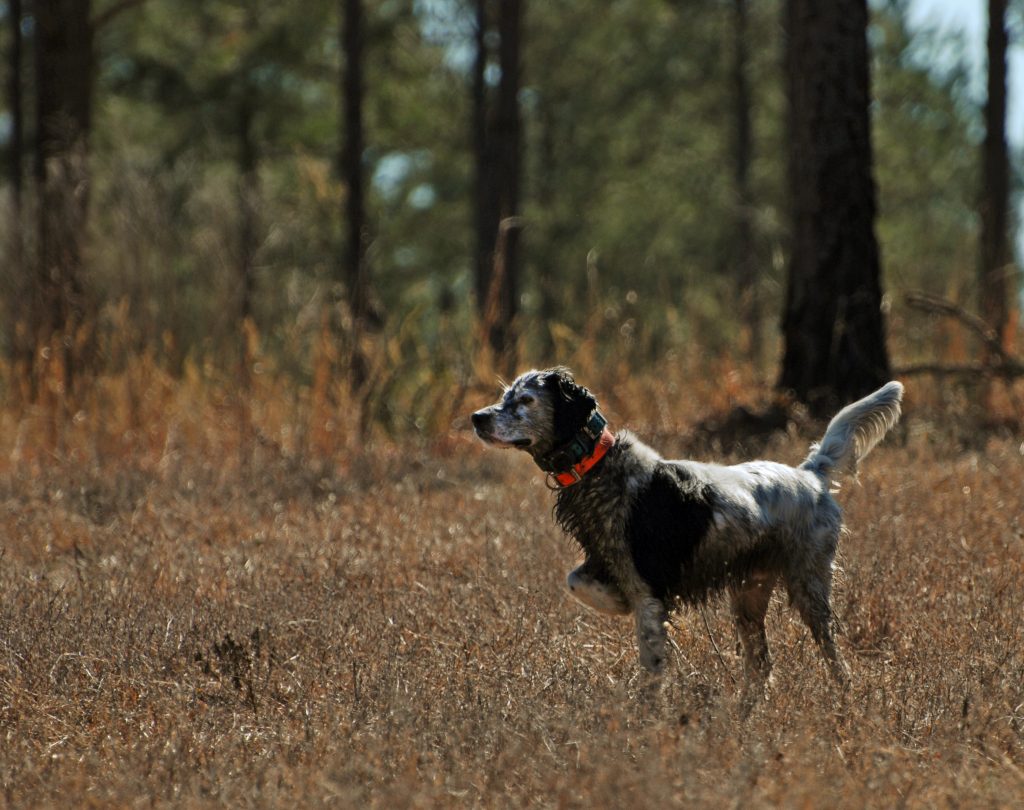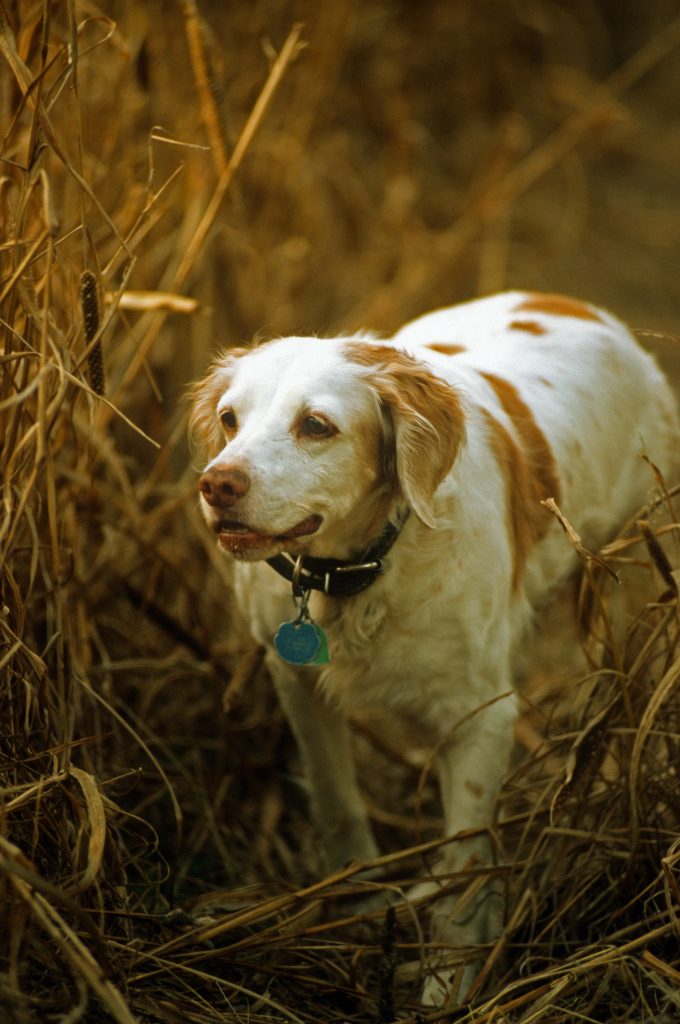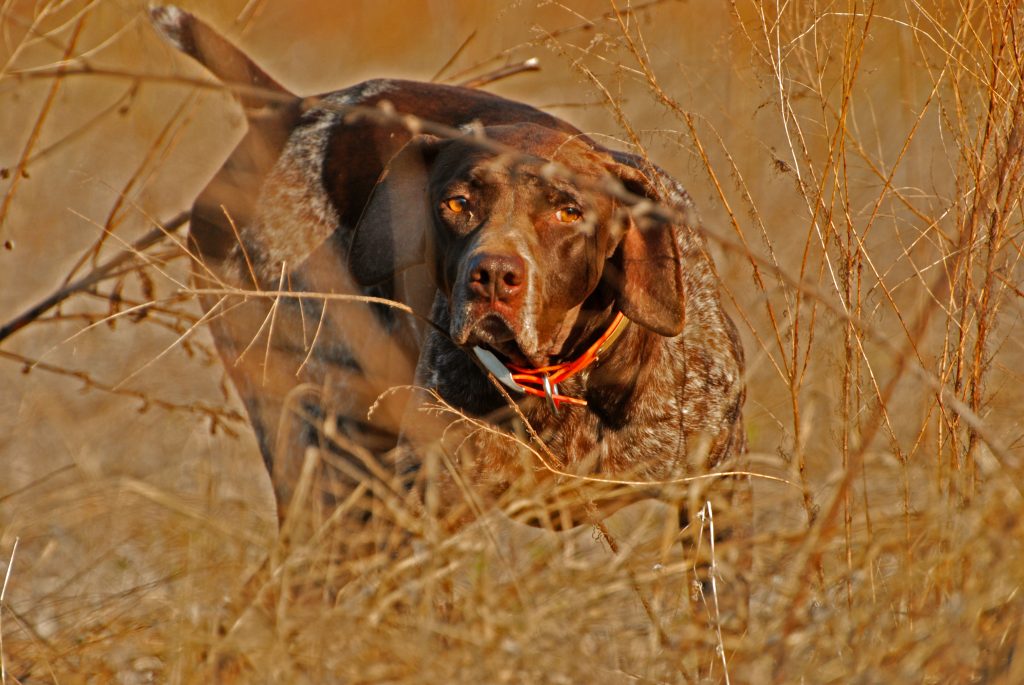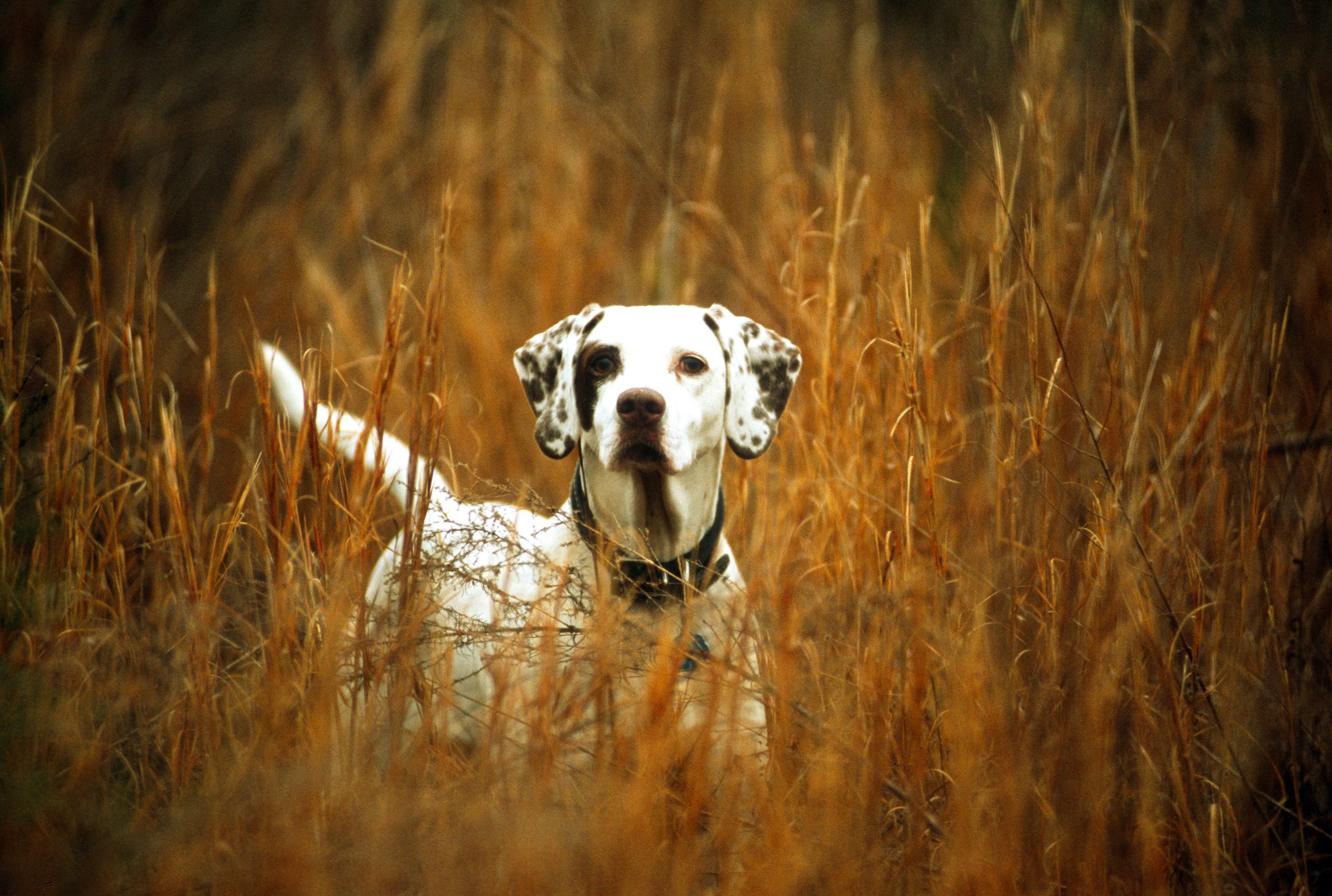
The English pointer has been one of the most popular bird dogs in the South for many years. They have a great ability for finding birds, all day endurance and a rock-solid point.
Havilah Babcock, South Carolina’s unofficial poet laureate of the bobwhite quail, had this to say about bird dogs: “Bird dogs, even the best of them, can be as bungling and humorsome, and at times as downright silly, as the men who hunt with them.” Bird dog, an all-encompassing term, covers several breeds of hunting dogs. Pointers, setters, and spaniels are the three major types that have partnered with hunters for hundreds of years in the pursuit of upland birds such as quail.

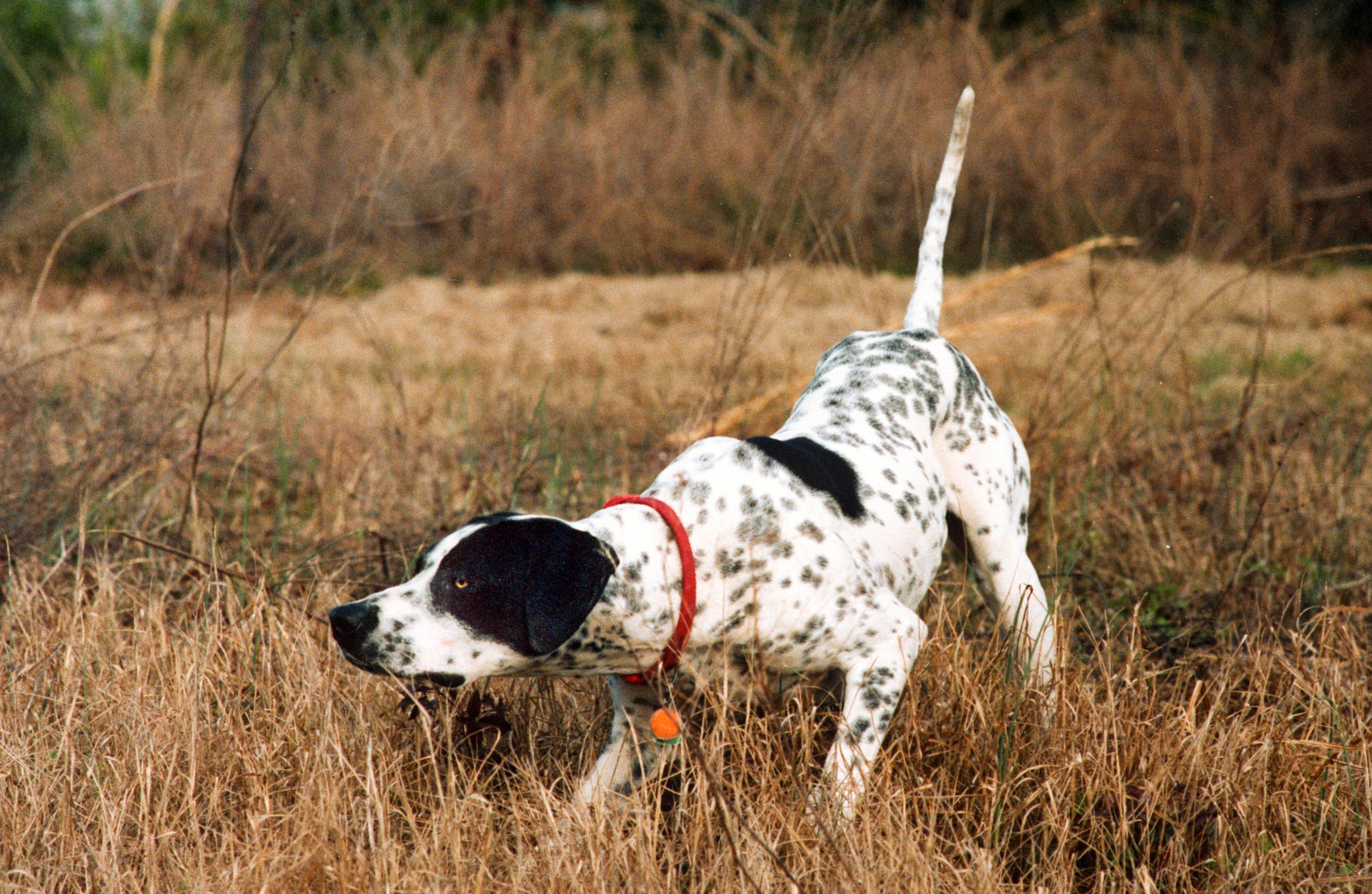
English Pointer
Established in England during the mid-17th century, the English pointer is one of the oldest hunting breeds. Although the ancestry of pointers is not known, it appears hounds were a major influence. This gave them great stamina and a superb nose. With short hair, an ability to hunt in warm weather, and able to cover large areas, these dogs have been a favorite for Southern quail hunters for many years.
One of my favorite bird dogs was a pointer named Andy who did everything right. He had a great nose, hunted at a medium distance, honored other dogs that found and pointed the birds first, and charged through briar patches as if they were not even there. Large and well-muscled, pointers have high energy and need to be exercised frequently. The predominant color patterns are white with either liver, brown, or black patches and speckles, also known as ticks.
English Setters
The English setter breed goes back as far as the pointer and maybe further. A description from the 1500s sounds very close to the blue Belton English setter of today. “Setter” comes from the phrase “setting dogges,” a term used to describe a dog that sets or points upland game. The English setter was derived from crosses of the Spanish pointer, water spaniel, and the springer spaniel.
English setters are predominately white with black, brown, or blue markings. They are very popular with bird hunters due to their friendliness, hunting ability, and eagerness to please, and they make great house pets as well. The English setter usually does not range as far as the English pointer and is easier to control and keep track of. Setters do not have the endurance of pointers, and their long hair can be a hindrance in briars and other thick cover.
Llewellin Setter
The Llewellin setter is a strain of English setter with a distinct bloodline. Llewellins are a little smaller than standard English setters and tend to hunt closer. They have strong endurance and a calm demeanor. Like their cousins, English setters, Llewellins make nice house dogs.
Gordon Setter
Gordon setters are striking dogs with beautiful black and tan markings. In general, this breed has lost much of its hunting ability, but some can still be found that are excellent bird dogs. Gordons are large dogs that hunt thoroughly and can take the elements from nasty weather. Gordon setters arrived in 1842 from Great Britain. The Fourth Duke of Gordon established the breed, hence its name.
American Brittany
Also referred to as the Brittany spaniel, the American Brittany is not a spaniel and is more closely related to setters. Originating in Brittany, which is in northwest France, about the same time as the English pointer and setter, Brittanys were bred to hunt upland birds. These dogs are also predominately white with either orange, liver, or black markings and with fairly short hair, but not as short as the pointer nor as long as the setter.
Brittanys have great energy and love to hunt. They range close to the hunter and make an effective combination with the longer ranging pointers and the medium ranging setters. I’ve hunted with a trio consisting of each — Jack the pointer, Sam the setter, and Abe the Brittany — and between the three, they covered every inch of cover we traversed. I called Abe “Honest Abe” because when he pointed, you could take it to the bank that a quail was in front of his nose.
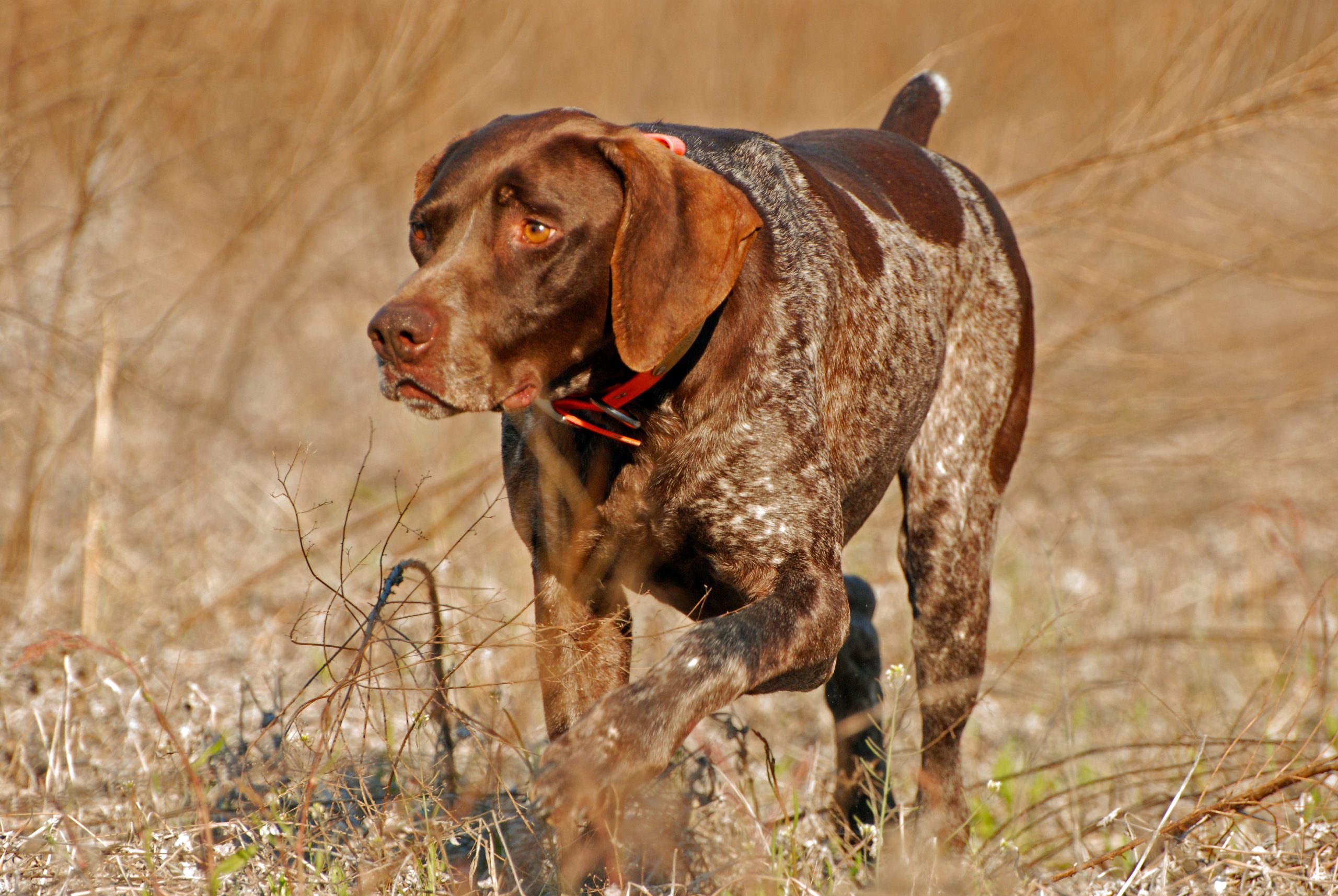
German Shorthaired Pointer
Also referred to as the GSP, the German shorthaired pointer originated in Germany during the 19th century. The Germans are well known for developing all-purpose hunting dogs that can excel in hunting upland birds and waterfowl and in tracking deer. GSPs have boundless energy and endurance. Daisy, a friend’s GSP I often hunt with now, can hunt all day and never tire. When the other dogs have to be lifted into the truck for the ride home at the end of the day, Daisy effortlessly jumps into her dog crate, acting as if she has just started the day hunting.
Daisy also has one of the best noses of any dog with which I’ve hunted. She is usually the first to find a covey, but when she does not, Daisy graciously honors the other dog. Once Sam, the setter, found a single on the other side of a large fallen tree. Daisy did not see the point until she hopped up on the log but instantly turned statuesque, frozen, not taking a step off her perch while “backing” Sam with the honor she deserved.
German Wirehaired Pointer
Another of the versatile German breeds, the German wirehaired pointer comfortably points upland birds as well as retrieves waterfowl. They have a thicker and denser coat than GSPs, giving them greater durability when hunting in cold, wet conditions. They also have a calmer demeanor than GSPs but are loaded with high endurance.
Deutsch-Drahthaar
Very similar in appearance to the German wirehaired pointer, the Deutsch-Drahthaar breed has a demanding ability testing system to keep the breed pure in its hunting capabilities. Some hunting breeds, such as the Irish setter, over the years have lost their unique hunting characteristics due to popularity and relaxed breeding standards.
Cognizant of this, Deutsch-Drahthaar enthusiasts have created the ability testing system to keep the hunting instinct alive. Like the GSP and the German wirehaired pointer, the Deutsch-Drahthaar is an all-around hunting dog that excels in retrieving, pointing, and tracking.
While other strains of bird dogs exist, these eight breeds are the ones bird hunters in South Carolina most readily use in the pursuit of Gentleman Bob. The appeal of bird hunting has many facets all intertwined, resulting in that supreme moment of a covey rise. Beginning with the bird itself and the land and habitat it occupies, the fine shotguns carried, and a day spent with a good friend, the experience has many pleasures, but at the top of the list are the dogs themselves and the opportunity to watch them hunt.
As Babcock said, they are not perfect and make mistakes, but like us and our imperfections, we make a good team. Some days are stellar while many are not, but the important point remains; we are out there with them.
